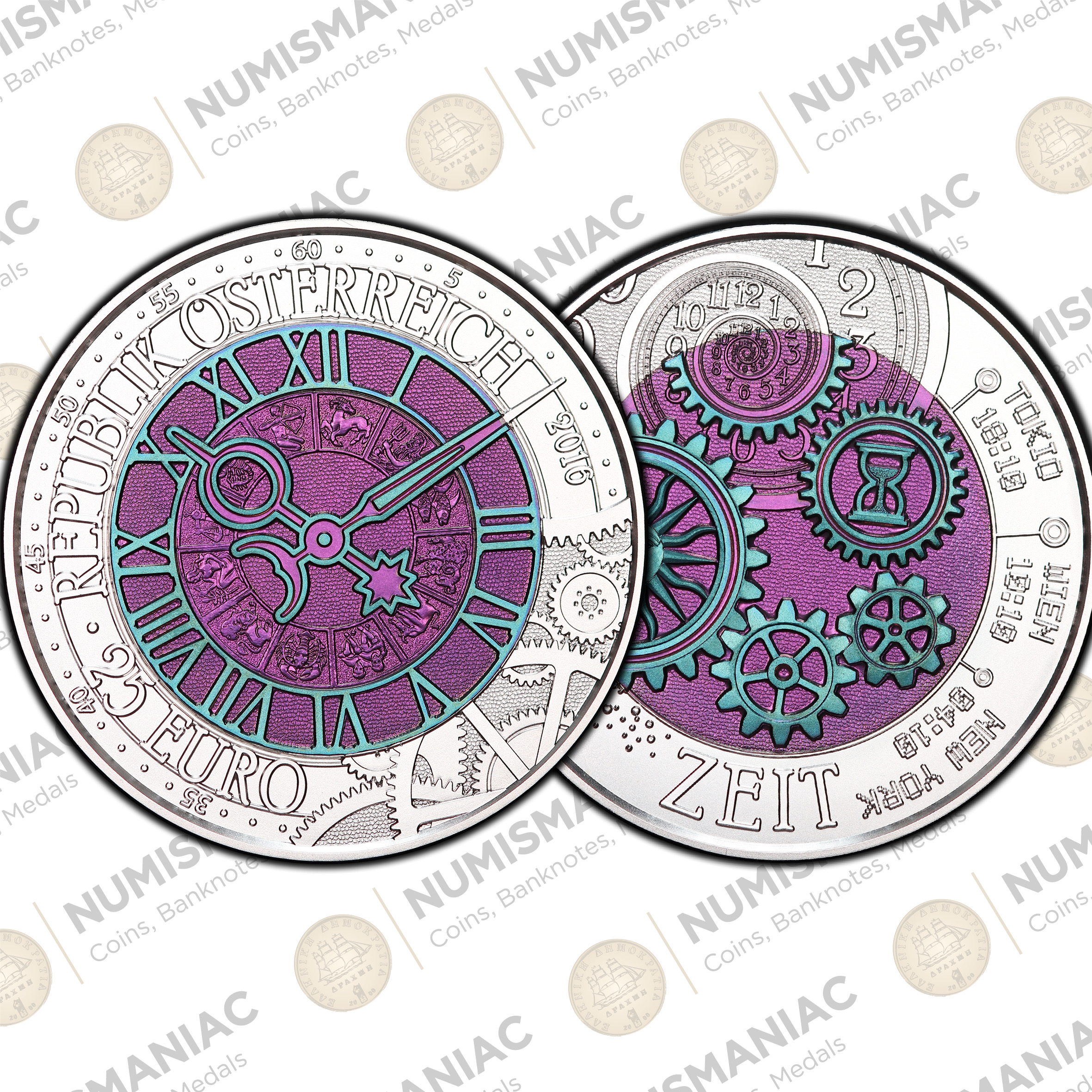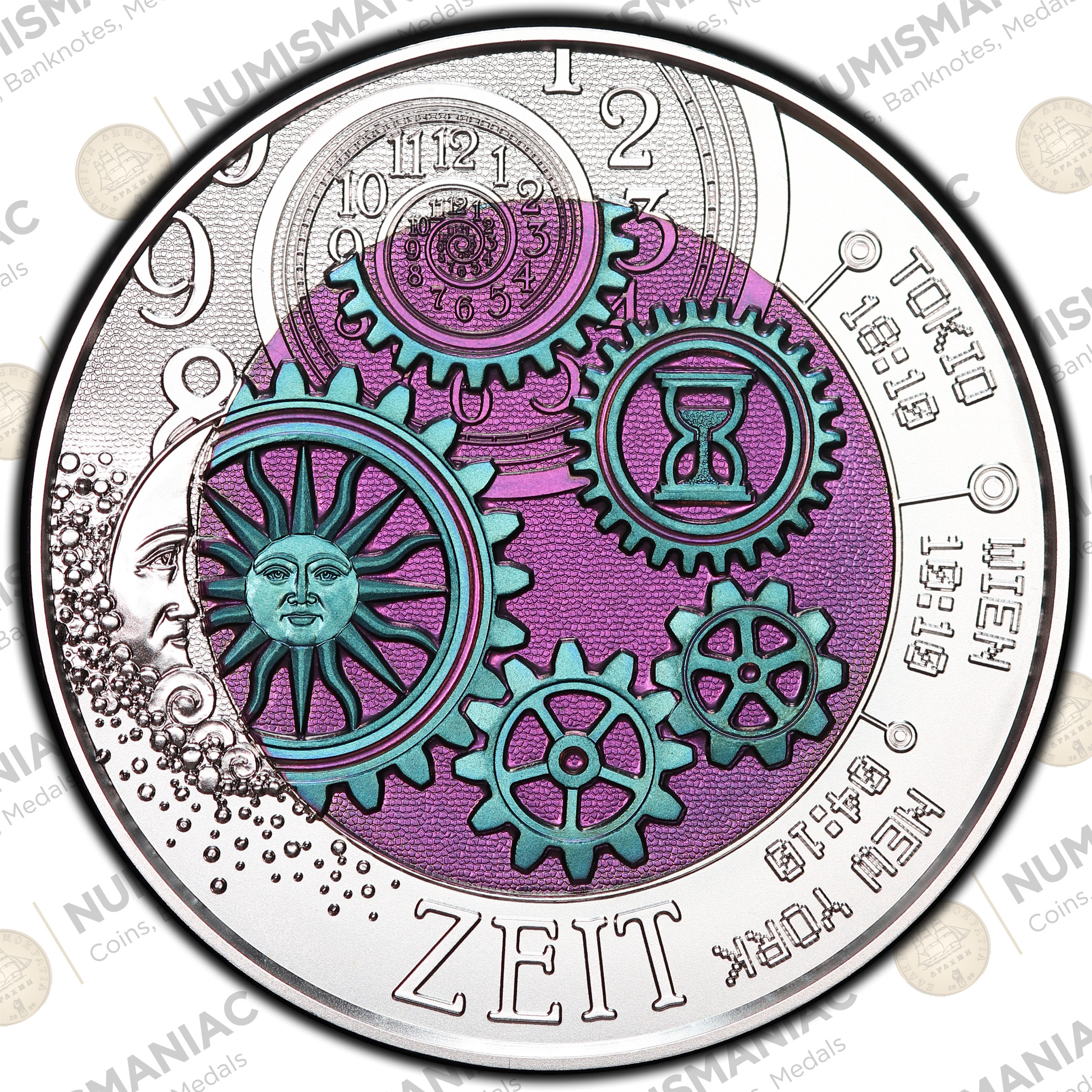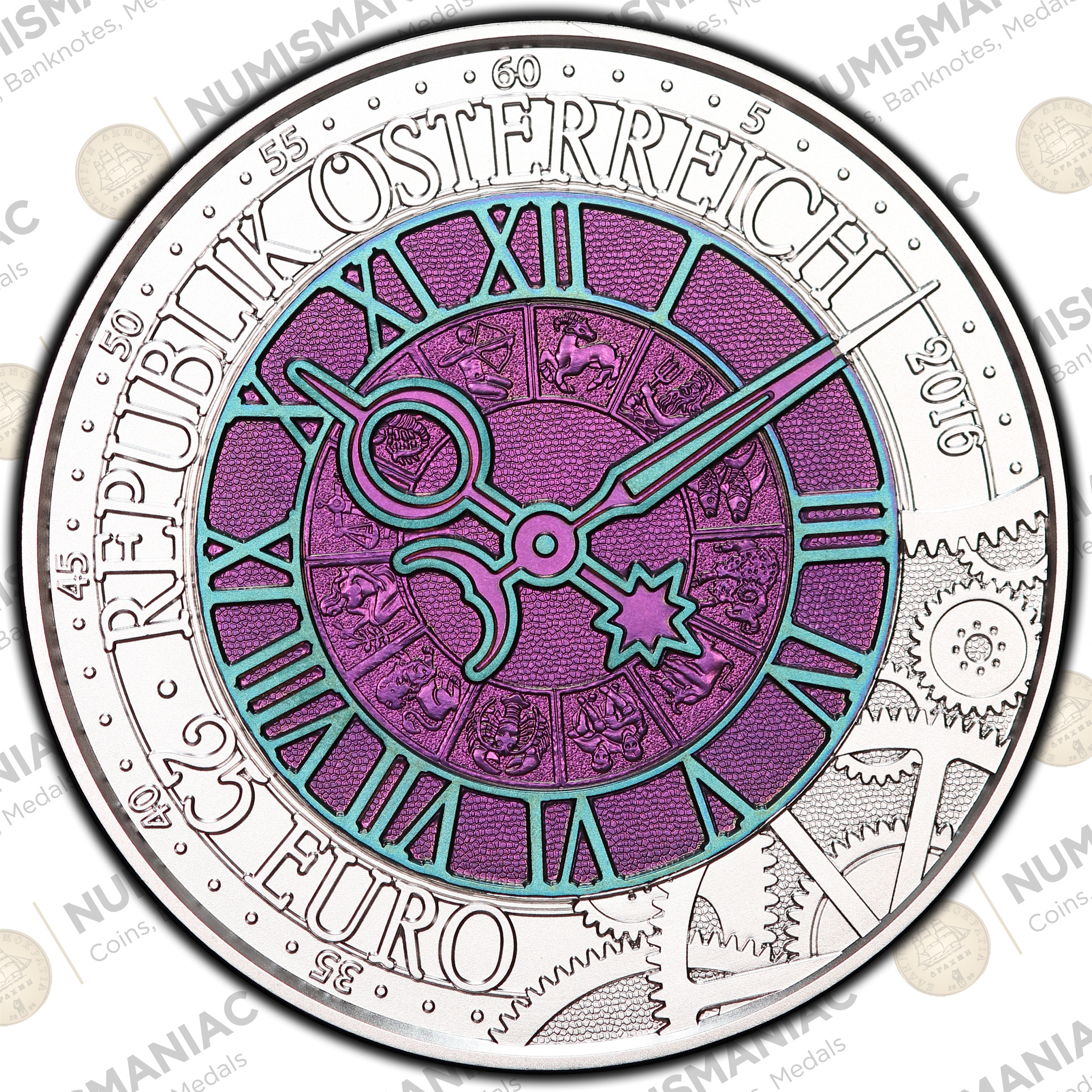The theoretical meaning of time may have long been a major subject of debate among philosophers, physicists and religious figures, but the more practical discipline of its measurement has proved to be less of a mystery. Dedicated to the history of chronometry, the latest ingenious addition to the Austrian Mint’s best-selling two-tone silver niobium coins, ‘Time’ uses its two-tone niobium core and outer silver ring to show a selection of timepieces throughout the ages.
A brief history of time keeping
Though hardly the most accurate of chronometers, the sun and moon, which feature on the coin’s reverse, along with an hourglass and watch mechanism, were widely used until the 16th century. It was determined back then that an hour lasts 60 minutes, though time has since been increasingly sub-divided, first into seconds and eventually nanoseconds. This has had the effect of making time ever more precious, with the phrase “time is money“, famously coined by Benjamin Franklin in 1748, being more pertinent today than ever, Standing for lasting value in a fast-moving world, however, the coin shows an old-fashioned clock face in the niobium core and a chronometer in the outer silver ring of its obverse, while the reverse also shows a time spiral and the time in a selection of famous cities.




Reviews
There are no reviews yet.